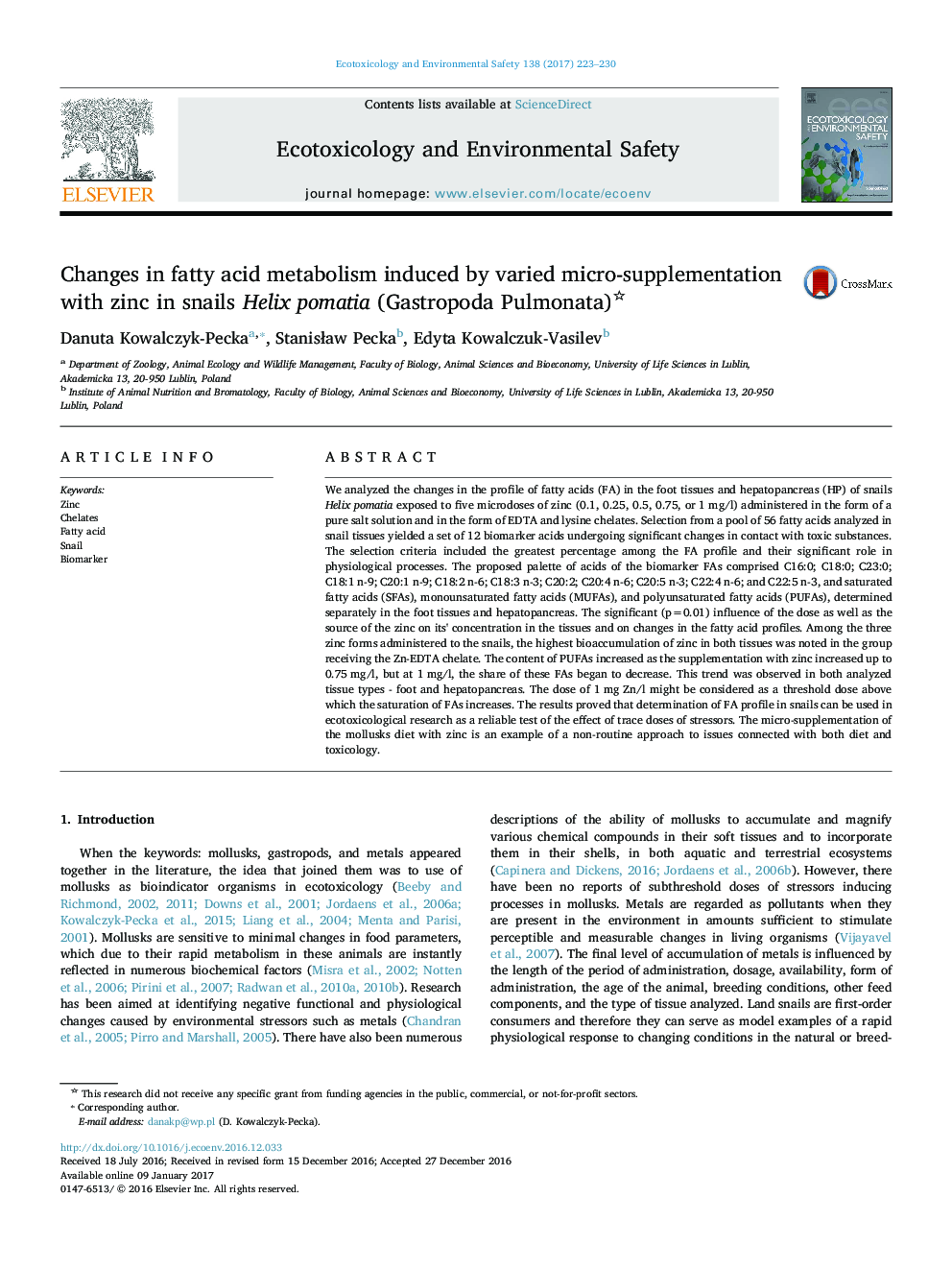| کد مقاله | کد نشریه | سال انتشار | مقاله انگلیسی | نسخه تمام متن |
|---|---|---|---|---|
| 5747952 | 1618926 | 2017 | 8 صفحه PDF | دانلود رایگان |

- PUFA increased in snail tissues exposed to Zn microdoses.
- Biomarker of FA varied depending on dose and form of Zn.
- Zn doses higher than 0.75Â mg/l induce FA saturation.
- Fatty acid profile can be used as a marker in ecotoxicology.
We analyzed the changes in the profile of fatty acids (FA) in the foot tissues and hepatopancreas (HP) of snails Helix pomatia exposed to five microdoses of zinc (0.1, 0.25, 0.5, 0.75, or 1Â mg/l) administered in the form of a pure salt solution and in the form of EDTA and lysine chelates. Selection from a pool of 56 fatty acids analyzed in snail tissues yielded a set of 12 biomarker acids undergoing significant changes in contact with toxic substances. The selection criteria included the greatest percentage among the FA profile and their significant role in physiological processes. The proposed palette of acids of the biomarker FAs comprised C16:0; C18:0; C23:0; C18:1 n-9; C20:1 n-9; C18:2 n-6; C18:3 n-3; C20:2; C20:4 n-6; C20:5 n-3; C22:4 n-6; and C22:5 n-3, and saturated fatty acids (SFAs), monounsaturated fatty acids (MUFAs), and polyunsaturated fatty acids (PUFAs), determined separately in the foot tissues and hepatopancreas. The significant (p=0.01) influence of the dose as well as the source of the zinc on its' concentration in the tissues and on changes in the fatty acid profiles. Among the three zinc forms administered to the snails, the highest bioaccumulation of zinc in both tissues was noted in the group receiving the Zn-EDTA chelate. The content of PUFAs increased as the supplementation with zinc increased up to 0.75Â mg/l, but at 1Â mg/l, the share of these FAs began to decrease. This trend was observed in both analyzed tissue types - foot and hepatopancreas. The dose of 1Â mg Zn/l might be considered as a threshold dose above which the saturation of FAs increases. The results proved that determination of FA profile in snails can be used in ecotoxicological research as a reliable test of the effect of trace doses of stressors. The micro-supplementation of the mollusks diet with zinc is an example of a non-routine approach to issues connected with both diet and toxicology.
217
Journal: Ecotoxicology and Environmental Safety - Volume 138, April 2017, Pages 223-230